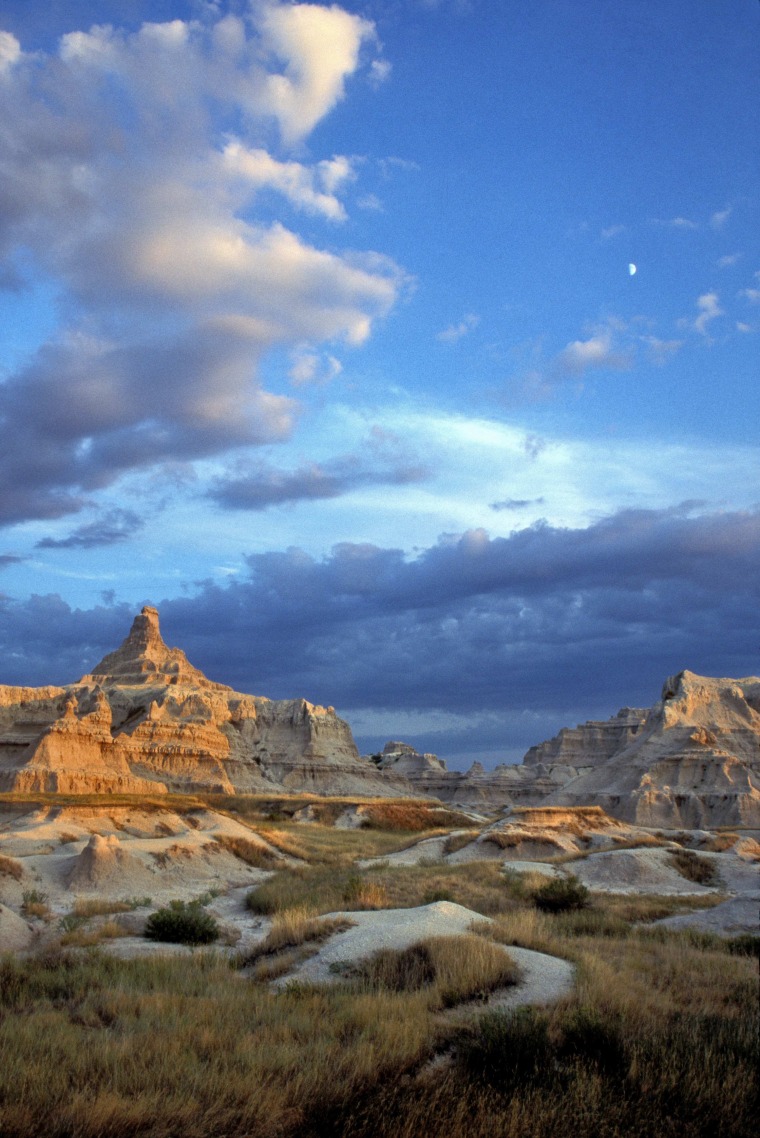The fate of about 12,000 acres of scenic North Dakota Badlands on the National Register of Historic Places is at the center of a debate over recognizing an area that inspired Theodore Roosevelt.
The U.S. Forest Service and National Park Service are pushing for the designation to highlight the significance of the region, where Roosevelt ran his cattle more than a century ago. Ranchers and state officials, though, fear it would hinder development and say local residents were not consulted.
"Our view is that it's benign," said Dave Pieper, the Forest Service's Dakota Prairie Grasslands supervisor. "It's just an acknowledgment."
The National Register of Historic Places is the federal government's list of properties it considers worthy of preservation and recognition. The proposal for the historic designation includes land around the Theodore Roosevelt National Park Elkhorn Ranch and the Elkhorn Ranchlands, a private ranch that the Forest Service bought two years ago.
"It doesn't pose any restrictions," said Valerie Naylor, the superintendent of Theodore Roosevelt National Park in southwestern North Dakota. "It's a nice recognition of its historical significance."
"If it's just a title, then why do we need it?" counters Jim Arthaud, a rancher and Billings County commissioner. "This is about locking the land up. So for them to say it will not do anything is completely bogus. The people in this county are nervous."
Are development plans hindered?
Arthaud said the historic designation could prevent oil and gas development in the area and lessen the amount of land open for grazing. He said it also could hinder plans for a bridge over the Little Missouri River, which local residents say is a key to travel.
Billings County officials want a crossing over the river to connect state Highways 16 and 85 in the Badlands. It would cut as much as 100 miles (160 kilometers) off the commutes of many who live in the area, encourage economic development and cut the response times of fire trucks and ambulances, they say.
An environmental review of the bridge project, required under federal law, began this year, said Doug Hecox, a spokesman for the Federal Highway Administration. Environmental analyses for similar projects have taken up to five years, he said.
A listing on the national register, though, "wouldn't add any time or additional requirements" for the bridge project, Hecox said.
For the purchase of the private ranch two years ago, the federal government paid $4.8 million and conservation groups contributed $500,000. The Forest Service promised to keep allowing grazing and other activities, including oil and gas development, on the land.
A historic designation would restrict land use as outlined in that agreement, said Gov. John Hoeven's staff attorney, Ryan Bernstein.
"We believe the status change would add different layers of bureaucracy," Bernstein said. "We feel this is contrary to the original agreement."
Action postponed
The State Historic Preservation Review Board postponed action on the federal proposal last month. "Right now, it's been postponed indefinitely," Bernstein said.
Slideshow 28 photos
America's national parks
The federal agencies' proposal initially also included about 1,200 acres (485 hectares) of state land. State and federal officials said that land is no longer part of the proposal.
Bernstein said a big problem with the federal proposal was that state and local officials were not part of the process early on.
"It is a federal decision but we are very concerned that if it's done, they at least listen to locals and stakeholders in making the decision," Bernstein said.
"They needed to talk to people before they did this," Bernstein said. "They need to find common ground with everybody."
Pieper, of the Forest Service, said federal officials now plan to hold meetings with state and local officials on the nomination, though none are yet scheduled. He said there are nearly 13,600 historic designations nationwide, including 36 in North Dakota.

